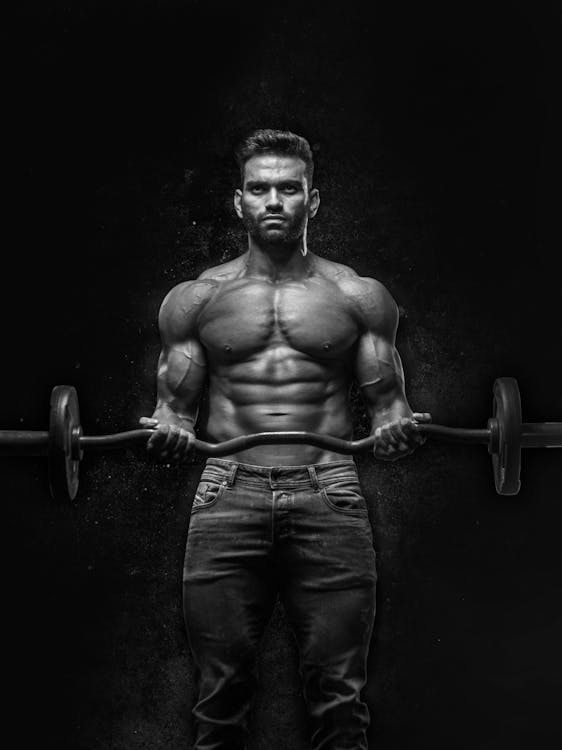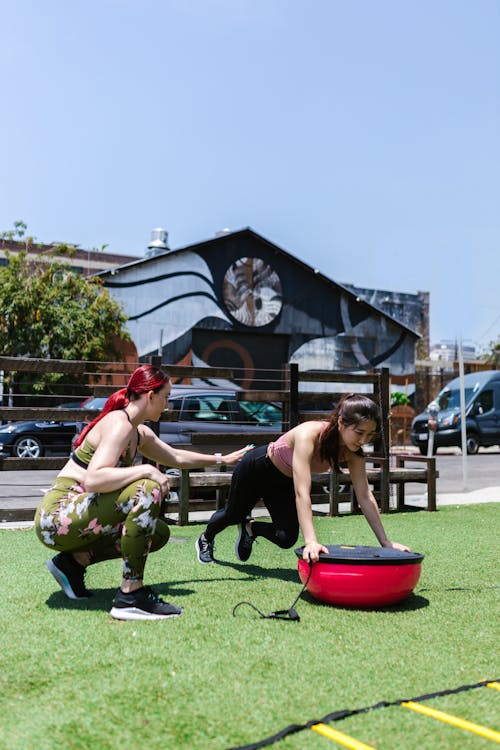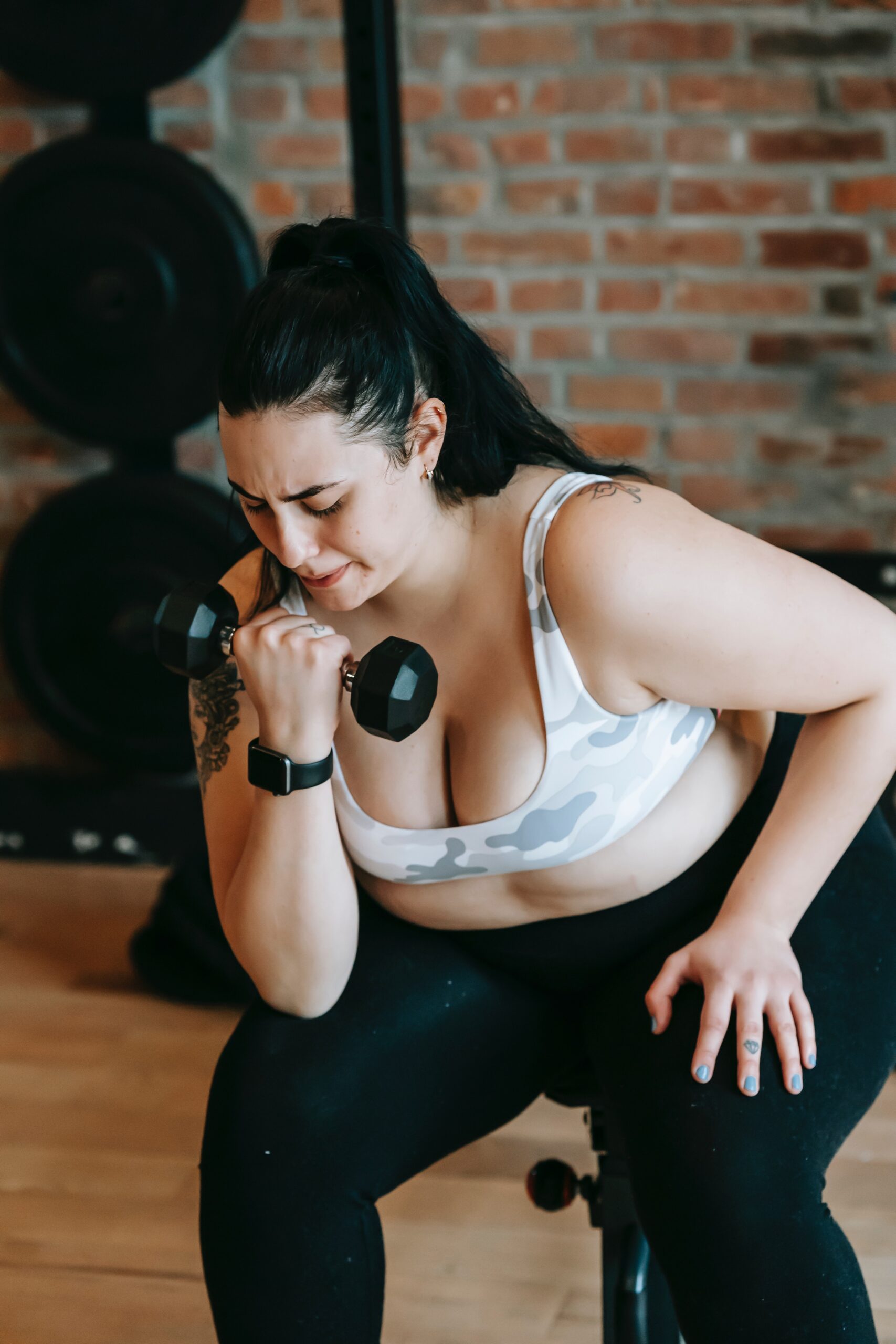People have experimented with many forms of exercise in their pursuit for physical fitness and a physically appealing physique. Calisthenics and gym-based training are two common strategies that are frequently contrasted. we will explore the differences between a “calisthenics body” and a “gym body,” looking at their traits, advantages, and disadvantages.
Calisthenics Body:
Calisthenics, sometimes referred to as “bodyweight training,” is a kind of exercise that relies on the body’s own weight as resistance. Several essential characteristics of a calisthenics body include:
Functional and lean muscle:
The growth of lean, useful muscle is one among the characteristics of a calisthenics body. Push-ups, pull-ups, dips, and bodyweight squats are examples of calisthenics exercises that depend on the body’s own weight as resistance. Because of this, people who do calisthenics frequently grow well-defined, lean muscles. This lean muscular mass is useful for daily tasks in addition to being aesthetically beautiful.
Mobility & Flexibility:
Exercises that increase mobility and flexibility are frequently incorporated into calisthenics programs. Workouts including calisthenics frequently include elements of yoga and movements with gymnastics influences. These exercises increase a person’s flexibility and range of motion, which helps them develop a physique that is balanced and quick. Additionally, increased flexibility might lessen everyday injury risk.
Body Control:
People who do calisthenics frequently have excellent body control. People who practice this discipline must be able to do complex maneuvers including handstands, muscle-ups, planches, and human flags. These physical prowess displays a person’s great bodily control, coordination, and command over their own actions.
Lower Body Fat Percentage:
Body composition is often heavily stressed during calisthenics training. A reduced body fat percentage is a result of combining body weight workouts with cardio-like motions, such as high-intensity interval training (HIIT). A toned and sculpted figure is the outcome, which many people find attractive.
Minimal Equipment:
The fact that calisthenics require nothing in the way of equipment is one among its many tangible benefits. A wide spectrum of people can participate in calisthenics since many exercises require little to no equipment. For people who prefer to exercise outside or have limited access to gym facilities, this accessibility is very tempting.
Gym Body:
In contrast to calisthenics, those who do weight training in a gym setting are sometimes thought of as having a “gym body.” This method results in the following distinctive qualities:
Muscle Mass:
The mainstay of gym exercises, sometimes referred to as weightlifting or resistance training, is the use of free weights, machines, and other equipment. This type of training encourages considerable muscle growth, giving the body a more muscular and, occasionally, larger appearance. Targeting particular muscle groups helps gym goers reach their ideal physique.
Strength and Power:
Compared to calisthenics training, the nature of gym-based workouts—which entail lifting heavy weights—leads to higher increases in strength and power. Gaining more strength is helpful for accomplishing fitness objectives as well as for improving performance in other endeavors and sports.
Varied Specialisation:
Gyms offer a flexible setting for specialized training. People might decide to concentrate on particular fitness objectives like bodybuilding, power lifting, or strength training. This customization enables the pursuit of certain sports goals as well as focused muscle growth.
Potentially Higher Body Fat Percentage:
While some gym goers keep their body fat levels low, others may have greater amounts of body fat. This may be the consequence of bulking periods, during which people purposefully consume more calories in an effort to gain muscle, or a preference for calisthenics regimens over cardiovascular activity.
Greater Equipment Variety:
The variety of equipment available at gyms includes barbells, dumbbells, cable machines, and other items. Due to the diversity, different training regimens and the capacity to isolate and target particular muscle areas are made possible. Gym-goers also have access to a helpful community and qualified trainers who may offer advice.
Now that we’ve outlined the characteristics of both a calisthenics body and a gym body, let’s conduct a comparative analysis to understand the benefits and drawbacks of each approach:
Development of Muscles
- Body of a Calisthenic: The focus is on developing lean, functioning muscles. It results in a toned body without too much weight.
- Gym Body: Workouts performed in a gym can significantly increase muscle mass and provide the illusion of having greater muscle.
Benefit: Individual preferences determine which of these two strategies to choose. While gym training are good for anyone looking to significantly increase their strength and muscular mass, calisthenics is perfect for those who desire a lean and functional body.
Flexibility and Mobility:
- Body of Calisthenics: Calisthenics places a high priority on flexibility and mobility, which helps to create a balanced and agile body.
- Gym Body: Workouts in the gym often place more of an emphasis on building strength and muscle than on flexibility.
Benefit: Calisthenics are excellent at encouraging flexibility and mobility, which is good for general health and injury avoidance. However, folks with specific strength objectives might like working out at the gym.
Body Control:
- Body of a Calisthenics : Calisthenics practitioners exhibit great body control while mastering complex bodyweight exercises.
- Gym Body: Workouts in the gym tend to focus more on building strength and muscle than they do on complex body control techniques.
Benefit: Calisthenics is exceptional for developing body control and remarkable motions. Though they might concentrate on strength development, gym exercises might not provide the same level of skill improvement.
Body Composition:
- Calisthenics Body: Training in calisthenics frequently results in a decreased body fat percentage, giving the body a more defined appearance.
- Gym Body: Depending on their eating habits and exercise routines, gym visitors may have varied body fat percentages.
Benefit: Calisthenics is a good way to build a lean body. Exercises in the gym are flexible, allowing people to adjust their strategy based on their body composition objectives.
Equipment and Accessibility:
- Calisthenics body: Because Calisthenics requires little equipment, even individuals without access to a gym can participate.
- Gym Body: Workouts in the gym need a number of tools and resources that not everyone may have access to.
Benefit: Calisthenics excels in terms of accessibility, enabling people to workout productively with the least amount of gear. Gym workouts provide a variety of training possibilities but need using the facilities.
Strength and Power:
- calisthenics Body: Although calisthenics improve functional strength, they may not provide increases in absolute strength as great as those obtained from working out in a gym.
- Gym Body: Resistance training done in a gym is very effective in boosting both functional and absolute strength.
Benefit: Exercise at a gym is excellent for building strength and power, which can be useful for reasons other than appearance. Calisthenics develops practical strength for everyday tasks.
Fitness enthusiasts have a compelling option when it comes to deciding between a “calisthenics body” and a “gym body” in their quest of physical fitness and the acquisition of a physically appealing physique. This in-depth comparison of the two strategies highlights a wide range of variables to take into account and emphasizes how crucial it is to match one’s fitness journey with individual objectives, tastes, and lifestyle.
Calisthenics, which is based on the concepts of bodyweight exercise, has become a strong competitor in the field of fitness. The particular features of a calisthenics body, such as the growth of lean and useful muscles, define it. This method’s attractiveness resides in its capacity to mould a body that is both aesthetically pleasing and incredibly useful for daily tasks. Exercises like push-ups, pull-ups, dips, and body weight squats are used by devotees of calisthenics to develop the well-defined muscles that elegantly adorn their bodies.
The calisthenics body’s dedication to flexibility and mobility is another distinguishing feature. Range of motion and flexibility are improved by adding yoga-inspired exercises and gymnastics components to calisthenics regimens. This improves general health by lowering the chance of accidents in daily life, in addition to the aesthetics of a balanced and nimble body.
The degree of body control attained by calisthenics practitioners is arguably the most amazing feature of a calisthenics physique. The highest level of body control, coordination, and complete mastery over one’s motions may be shown in the ability to do advanced maneuvers like handstands, muscle-ups, planches, and human flags. Beyond just looking good, this degree of control is a testimonial to the commitment and discipline that calisthenics training demands.
Additionally, calisthenics is well known for enabling a decreased body fat percentage. A toned and contoured physique is produced by combining bodyweight workouts with cardio-like motions, such as high-intensity interval training (HIIT). There is no denying the attractiveness of this slim composition, which has led many people who desire both form and function in their bodies to turn to calisthenics.
The fact that calisthenics require very little equipment is one of their most useful benefits. By making exercise more accessible, people may start their fitness journeys with little to no equipment. It’s an invitation to exercise anyplace, whether in the comfort of one’s home or the quiet solitude of a park. Due of its accessibility across all boundaries, calisthenics is a fitness method for all people.
On the other hand, the “gym body” denotes a distinct path in the search for physical excellence. Resistance training with weights, machines, and a variety of equipment is what gym workouts are all about. Muscle mass that is significant, well-defined, and occasionally on the larger end of the range is the distinguishing feature of a gym body. Weightlifting and resistance training provide substantial muscle gain, giving rise to the muscular physique frequently associated with this method.
Exercises at the gym are effective for building strength and power. Heavy weightlifting techniques encourage not just significant improvements in power but also in functional strength. This increased strength translates into a greater capacity to take on a variety of hobbies and sports in addition to fitness goals.
rkouts at the gym also provide a tempting selection of specialization options. Fitness enthusiasts, whether they specialize in bodybuilding, powerlifting, or strength training, may modify their workouts to meet their unique goals. This versatility enables people to tailor their fitness journeys by concentrating on certain muscle groups or sports goals.
It’s critical to recognize the possibility for variation in body fat percentage among gym bodies. While some gym visitors consistently have low body fat percentages, others may have variations because they are bulking up or because their calisthenics routines place less of an emphasis on cardiovascular training.
The desire for a wide array of equipment arises from the need for tremendous diversity, and gyms meet this need. The variety of equipment accessible in a gym setting, including barbells, dumbbells, cable machines, and resistance bands, enables flexible exercise programs. This variety makes it possible to isolate and focus on the growth of particular muscle groups, which makes it easier to precisely shape one’s body. In addition, going to the gym frequently gives you access to a helpful network and qualified trainers who can provide direction and inspiration.
The decision between a calisthenics body and a gym body should, therefore, be based on each person’s interests, goals, and preferred training methods. People who value both beauty and usefulness equally are drawn to the slim, functional physique developed by calisthenics, especially given the little equipment needs. On the other hand, people want to significantly increase their muscular size, strength, and power should turn to gym exercises, which also provide a wide variety of equipment and specialized training possibilities.
There is ultimately no single, “ideal” body shape, and both strategies can lead to improved fitness and wellbeing. A well-rounded fitness regimen that combines the best of both worlds may be possible for certain people by combining calisthenics with gym-based training. Regardless of the route taken, the secret to success is locating a workout routine that complements one’s objectives, fits one’s way of life, and offers personal fulfillment. The first step toward a fitness strategy that most profoundly resonates with you is the first step toward a healthier and more vibrant you, whether it’s the elegance of calisthenics or the raw strength of gym exercises.
“If it doesn’t challenge you, it doesn’t change you.”




